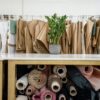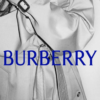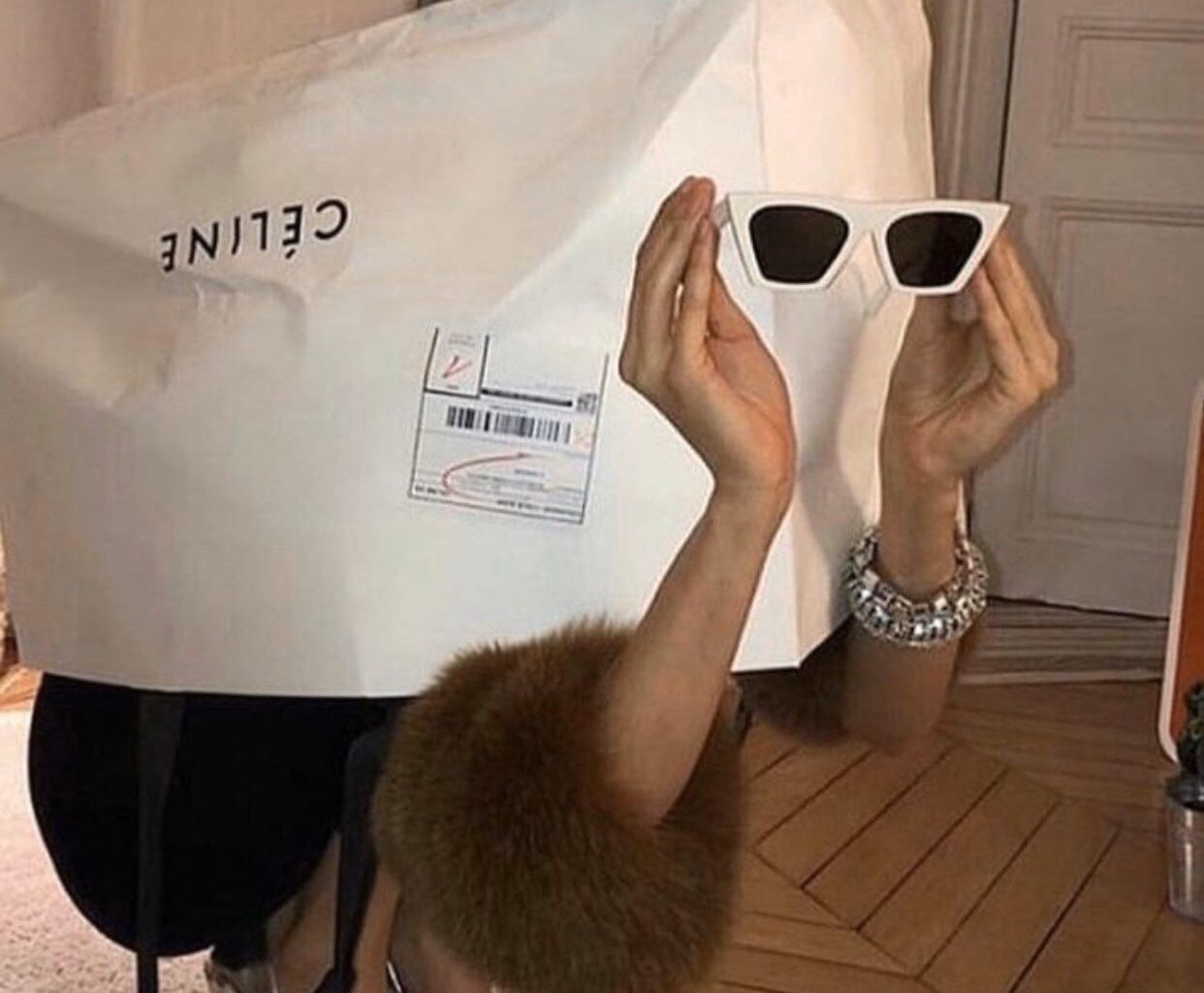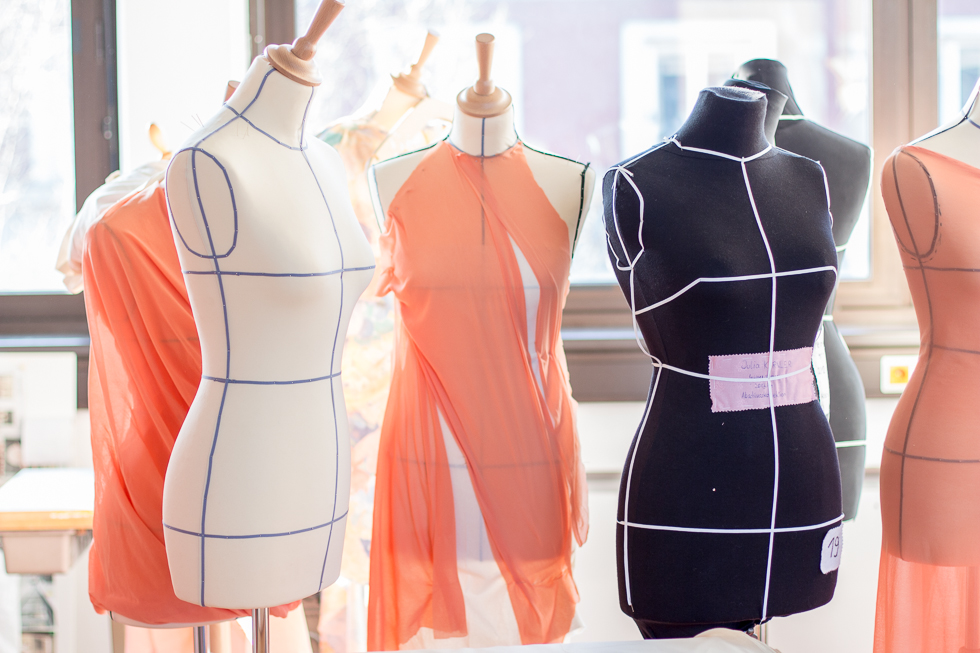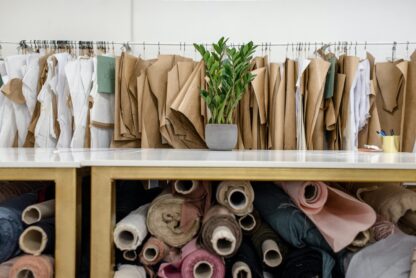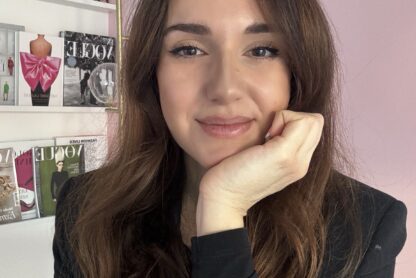Dreaming of working in the fashion industry?
Are you sure that you know all the truth about it before embarking on this exciting journey?
As I have been teaching about how to get a job in fashion here on Glam Observer, I realized that many fashion enthusiasts have strong misconceptions about the industry that created an idealized and partly true version of it.
I often hear myths like:
Fashion is all about creativity
Everyone working in fashion has a fashion degree
It’s impossible to get in without experience
People work with clothes and go to parties all the time
Everyone wears expensive designer clothes
People are rude
…
Luckily, you are about to learn some nice surprising things about the industry. Hopefully, it will dismantle all the misconceptions you may have had about working in fashion, and boost your confidence in the process! Together, let’s discover what it’s really like working in fashion: myths and realities.
Working In Fashion: Myths And Realities
Fashion Industry Myth 1: It’s all about creativity
People believe that working in fashion means endless creativity. In reality, there are periods of routine and administrative tasks, just like any other job. Many approach the fashion world convinced that they want to design clothes or work for Vogue. After all, programs like Project Runway, Next in Fashion, Making the Cut or The Devil Wears Prada, show the role of the fashion designer and editors exclusively. Hence these are usually the first careers associated with the industry.
Reality: The fashion industry encompasses a wide range of roles, from design to production, marketing, and retail.
Behind a fashion company, there are so many different layers and professions, I bet you would be surprised! Industry insiders know that the shoes, clothes, and accessories produced are the result of the work of thousands of people from different departments.
It’s not enough to produce the best dress, jeans, or bags if it doesn’t sell. That’s why the fashion world has a mix of creativity and business. In addition, there are many economic, social, and cultural factors that influence the decisions of a fashion company.
Fashion Industry Myth 2: People work with clothes all the time
While it’s true that, unlike other industries, you have to work mainly with clothes, it does not mean that those who work in fashion spend all day working with them. But not every day is a photoshoot. The planning, reporting, analysis, and organizational part that comes before the creative work, will take the majority of your time. Just think about the example of a fashion show: the “fun” part, the show itself, lasts 10 minutes on average, but it takes one year to plan and put together. Or think about a Vogue cover. The day of the photoshoot is just one max a couple. But editors and people working at a magazine spend months planning, analyzing, and organizing everything.
Reality: Most fashion professionals work behind the scenes.
While designers, product developers and stylists work with clothes and fabrics on a daily basis, all the other professionals working in marketing, buying, brand management, and PR see the products less frequently. Many fashion professionals spend much time of their day behind the computer. Also, many roles have to deal with numbers and programs like Excel. When I first entered the industry over 10 years ago, I didn’t expect to see everyone spend hours on Excel. This program is not only used by those who work in finance, buying, or merchandising departments but also by creative roles including stylists, editors, designers, writers, PR managers, etc. They use Excel on a daily basis for a variety of tasks. These tasks include sales tracking, inventory management, budgeting, creating schedules, organizing fashion shows and events, and so on.
Fashion Industry Myth 3: Fashion is a superficial and fun world
The fashion industry is often thought of as superficial and fun, a perfect and glamorous world where everything seems to flow smoothly.
Reality: Fashion is known for its insane working rhythm and the stress that it causes.
Long hours in the fashion industry are a well-established reality. They are particularly pronounced during busy seasons and leading up to major events like fashion shows or product launches. Fashion operates on a seasonal schedule. While they work months in advance before a collection gets released or a Vogue cover hits the newsstands, when the seasons and deadlines approach, the workload can become incredibly intense. Designers, production teams, and other industry professionals often work extended hours to meet tight production and delivery deadlines.
The pressure to complete a collection or meet delivery schedules can result in many consecutive days of work without regular breaks. Fashion is known for its last-minute changes and adjustments. A creative director might decide to change the color of a bag the day before it hits the runway. Designers and production teams may need to respond to evolving trends. They also need to respond to unforeseen issues with fabrics, production quality, or fitting. It can lead to additional hours spent perfecting the product.
Fashion Industry Myth 4: Everyone attends fashion shows
I wish that was true, but in reality not everyone working in fashion gets to attend fashion shows. Besides influencers and celebrities, these fashion events are not for every single person working in fashion. Although the electricity and excitement are shared across the entire company and you’ll definitely feel it’s show time whatever your role, only a few roles actually go to attend fashion shows, for example retail buyers, editors, and the PR team because it is indispensable for their roles, but those who are not directly involved in selling the collection and making buzz around it don’t have to attend fashion shows.
A small percentage of corporate roles might attend only the show of the brand they work for. So for example if you work at Gucci in a corporate role, you might attend the Gucci show standing (so not comfortably seated) or from the backstage. All the others watch the show from the live stream of the Gucci offices.
Reality: Fashion events are not for fun when you work in the industry.
From the outside, it may look like fashion events and parties are a place where people only have fun. However, it takes a lot of work to organize them. Plus, it’s important to understand that these events have a bigger purpose than just having fun. They are part of a brand’s marketing strategy to increase its visibility and scope of reach. Fashion professionals attending industry events indeed have a specific purpose and are not merely spectators or influencers. They are there to work, and their interactions serve various professional functions beyond personal interest.
They have responsibilities and need to complete a task in an unpredictable environment. Many fashion professionals, such as journalists and fashion writers, attend industry events to gather information and material for their articles. Some fashion professionals represent brands or designers at these events. They may engage with attendees to promote the brand’s products or message and answer questions. Also, they establish connections with potential clients or partners. Photographers, videographers, and media personnel attend events to document the moments. Yes, they might have fun at the end of the evening when they are done with their to-do list but being a guest at an event and being there for work is totally different.
Fashion Industry Myth 5: Fashion professionals wear designer clothes all the time
For this one, I blame (and am fascinated at the same time, to be honest with you) fashion movies and social media because they’ve created an idealized version of how fashion professionals dress. We are exposed to influencers and models who dress and look perfectly every day. Naturally, they care about their looks, and this is an industry where appearances matter more than in any other.
But the truth is that not everyone wears exclusively designer clothes, heels, and the latest it bags and shoes.
Not everyone working in fashion can afford to wear designer clothing regularly. Fashion professionals often invest in their careers, which may include education, networking, and other expenses. Spending large sums on designer clothing is not feasible for many, especially those in entry-level positions and interns.
Have you ever noticed how creative directors are dressed when they come out to get a well-deserved applause at the end of each fashion show? They always wear basic garments and have their own uniform that they always repeat. Anna Wintour is known for always wearing a floral dress and her choker necklaces and black Chanel sunglasses. Also, Miuccia Prada wears a sweater and a long suit; Pierpaolo Piccioli adopts a uniform with a white t-shirt, black blazer and pants, and white sneakers.
And if you look at the Instagram profiles of PRs, buyers, etc., you’ll notice that they dress up pretty much like you and me. Some do it as a matter of practicality and avoid taking too long to get dressed in the morning. However, in general, once you have found the look that suits you and makes you feel comfortable and confident, there is nothing wrong with replication it.
What you wear also depends on the company.
If you are working at a startup or small agency, you will likely adopt a relaxed outfit. However, if you work for a big luxury company, you will probably wear something more formal. This is just an example, but make no mistake that people working at Chanel, Prada, Dior…also wear jeans and sneakers 😉
Some of you have asked me if your appearance, the way you dress, and your weight are important for getting a job in fashion. Unless you want to work as a model where you will be asked for your measurements. Luckily, fashion companies are starting to diversify traditional beauty standards and make space for models with different body shapes. Your weight and height don’t matter, and don’t affect your career success!
Some companies notice the way their employees dress more than others.
This can be particularly true in roles that involve client-facing interactions or represent the brand directly. The nature of your role can greatly influence how much attention is paid to your personal style. For example, if you’re a stylist or an aspiring one, your job involves selecting and coordinating clothing for others, so your personal style and fashion knowledge may be more closely scrutinized. Or it’s easier to spot editors wearing more fashion-forward looks compared to corporate roles of the fashion industry with a more business-casual or professional dress code.
Still remember that after all, we are in fashion because we love clothes so it’s quite normal to look at what others are wearing or to care more about the outfits you wear than other industries. Looking at colleagues, stylists, and models should be inspiring but in the end, you have to dress like yourself and feel comfortable.
If you are new to the fashion industry and want to know what to wear to a fashion job interview, read this article.
Fashion Industry Myth 6: People are rude
Contrary to what “The Devil Wears Prada” may suggest, people working in the fashion industry are not shallow, snobby and rude. Fashion is a small world so everyone knows each other. People must be friendly because all the roles are interconnected. A fashion designer doesn’t work alone; they are surrounded by a team of buyers and product developers who help them build and sell the collection. Likewise, a marketing manager doesn’t work solo but consults with the creative teams to ensure that their materials and campaigns are aligned with the creative vision.
Fashion Industry Myth 7: Everyone working in fashion has a fashion degree
Attending a fashion school is the first thing that usually comes to mind when thinking about working in fashion.
Reality: 90% of fashion professionals didn’t study fashion
Most of the people who work in the industry studied something totally unrelated to fashion, like journalism, economics, law, marketing, art…
Fashion companies hire as many fashion students as they hire those who come from other fields. So if you want to study something non-related to fashion, or you are unsure if the fashion industry will forever be the industry you want to be in, and you could potentially be interested in other fields as well, then a traditional degree could be a better option so you leave more doors open.
It’s important to consider that a fashion school is not a guaranteed ticket to the fashion industry.
There are many factors that make a successful job application. And it’s not enough to have a prestigious fashion school on your resume to get a job easily. Truth is, fashion graduates struggle as well to get a job in fashion because this is one of the most competitive industries. More and more people have access to a fashion education today compared to the past. So recruiters are used to receiving applications from fashion students. A fashion degree is no longer an exception. So you need other things to stand out.
Fashion Industry Myth 8: I can’t get a job in fashion because I don’t have experience
Another big myth that I’ve noticed in fashion enthusiasts is the idea that you can’t get a job if you have no experience.
Reality: Everyone starts from scratch. Think about all your favorite designers, stylists, editors… or any other fashion professional you admire and they all started from the bottom with internships. Indeed companies post more internships than any other senior positions. The fashion industry hires people without experience (students, recent graduates, or people coming from different backgrounds) every single day. Building a career in fashion is a marathon, not a sprint. The first months or years of your career in fashion will require some sacrifices and internships.
So if you are at the beginning of your career and you apply for entry-level jobs and internships, the reason why you are not getting the job is not that you don’t have a fashion background.
It can be because you are not building the CV right, not sending a cover letter or portfolio, not using unconventional strategies to apply (I teach them in my free masterclass)…
As I wrote in this article, the fashion industry is hiring for potential. It means recruiters are not looking anymore for someone who knows it all already, especially for entry levels and internships. They will focus on other things than a prestigious university or tons of experience. It includes if you have the potential, skills, and motivation to learn everything on the job.
If you don’t know where to begin, start by watching my free masterclass where I’ll teach you 3 out-of-the-box strategies to land your dream fashion job or internship. Follow me on Instagram for more updates!


